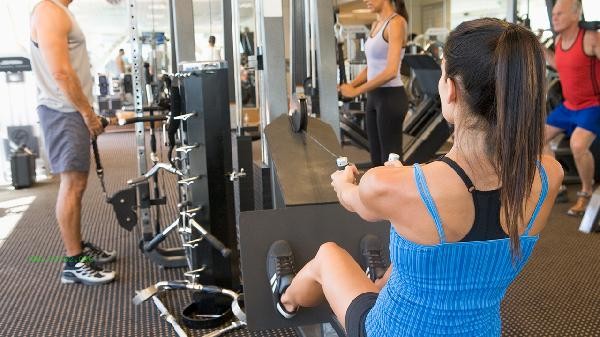The correct way for women to keep fit should be combined with aerobic exercise, strength training, flexibility exercise, core strengthening and scientific diet to avoid overtraining or single mode.

1. Aerobic Exercise
Engage in 3-5 moderate intensity aerobic exercises per week, such as brisk walking, swimming, or cycling, for at least 30 minutes each time. Aerobic exercise can help improve cardiovascular function, promote fat metabolism, and is suitable for people who need to lose weight. Pay attention to controlling the heart rate within the range of 60% -70% of the maximum heart rate, and fully warm up and stretch before and after exercise.
2. Strength Training
Schedule 2-3 full body resistance training sessions per week, with a focus on training large muscle groups such as buttocks, legs, and back. Use dumbbells, elastic bands, or self weight training, repeat 8-12 times per group. Strength training can increase muscle mass, improve basal metabolic rate, and prevent osteoporosis. During training, one should maintain the correct posture and avoid compensatory exertion.
3. Flexibility Exercise
Yoga, Pilates, and other flexibility exercises should be performed 2-3 times a week for 20-30 minutes each time. This type of exercise can improve joint mobility, relieve muscle tension, and prevent sports injuries. Pay attention to the rhythm of breathing during training to avoid muscle strain caused by excessive stretching.

4. Core reinforcement
Core training such as plank support and abdominal roll, 3-4 times a week, with 3 groups per session. Strengthening the core muscle group can improve posture, reduce lumbar pressure, and enhance athletic performance. During training, it is necessary to tighten the abdominal muscles, avoid waist compensation, and gradually increase the difficulty [SEP]. 5. Scientific diet
Daily intake of sufficient high-quality protein such as eggs and fish, combined with whole grains and vegetables and fruits. Moderate intake of carbohydrates before and after exercise, and protein supplementation within 30 minutes after exercise can help with muscle repair. Control total calorie intake, avoid high sugar and high-fat foods, and maintain adequate hydration. Female fitness needs to adjust exercise intensity according to the physiological cycle. During menstruation, the amount of training can be reduced, and during ovulation, strength training should be appropriately increased. Suggest recording training logs and regularly evaluating indicators such as body fat percentage and muscle mass. Avoid excessive pursuit of rapid weight loss and maintain a healthy weight loss rate of 0.5-1 kilogram per week. Wear appropriate sports underwear and footwear during exercise. If joint pain or abnormal fatigue occurs, rest in a timely manner. Long term adherence to a scientific fitness plan, combined with sufficient sleep and psychological regulation, is necessary to achieve the dual goals of body shape improvement and health enhancement.







Comments (0)
Leave a Comment
No comments yet
Be the first to share your thoughts!